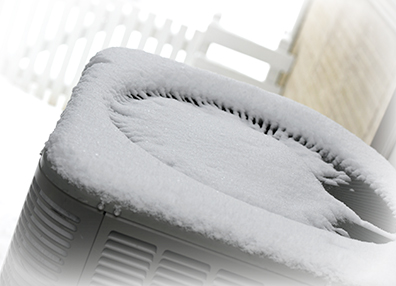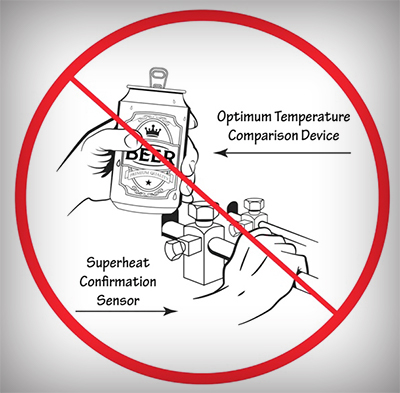Their goal is an attempt to increase heat pump installation quality throughout the state. It wouldn’t surprise me if the government closely monitors the energy consumed and compares it to the taxpayers’ total investment in the program. They will quickly find that these high-end systems do not perform at their rated efficiency.

old bias that they don’t work in cold
weather. Still, many contractors
don’t believe it.
National Comfort Institute has found that the average residential system delivers 57% of its rated capacity. In my experience, it would be conservative to say that nine out of 10 systems are oversized and lack the required airflow. It is common knowledge that if a system is running with insufficient airflow, it will have reduced efficiency and a lack of capacity.

Other Best Practices
Contractors may eventually be required to prove efficiency in order to qualify for these types of programs. If this sounds far-fetched, the technology already exists thanks to tools like measureQuick® and National Comfort Institute’s workflows. These tools will provide third-party verification to prove to your customers and the powers that be that the system that you installed is operating at the proper capacity and efficiency.
The measureQuick app enhances the functionality of smart tools and will guide users to commission a system to run at its peak performance. It can generate a digital report you can send to customers or save as a historical reference noting how the system was operating on day one.

The report includes Btu output as well as operating efficiency.
ACCA’s Quality Assurance program takes it one step further and verifies that the best sizing practices were followed. It requires you to perform a Manual J load calculation and verifies that the system you install meets the Manual S sizing guidelines.
What if You Don’t Qualify?
If my predictions become reality, there will be a massive number of residential contractors who will not qualify for energy rebates and tax credits.
This could disrupt the industry and create a clear distinction between contractors who can and can’t prove efficiency to their customers.
Two of the biggest factors holding back our industry are a lack of education and an unwillingness to change. One thing that I have learned over the past 20+ years in HVAC — and life in general — is that “the only constant is change.”
We are at a major crossroads in our industry, watching the introduction of A2L refrigerants, new efficiency demands, and the impending future of electrification. We will need to deal with all these issues while also navigating a skilled labor shortage.
Click Below for the Next Page:













Great article Adam.
Over 10 years ago MidAmerican Energy and Alliant Energy in Iowa required the use of NCI’s CommonCents verification software and pass with a 90% score to qualify for furnace, air conditioner, and heat pump rebates. After one year they dropped the score requirement (we still had to use CommonCents to document though) because so few installations actually met the 90% threshold. After the second year they dropped CommonCents completely. When the utility companies stopped requiring testing as part of their rebate programs I ended my partnership with those programs.
I am very excited to see so many people (most with ties to NCI) embracing high-performance contracting.
Thank you for the kind words, Dave. I feel like your story is probably a common trend in many areas throughout the country. HVAC contractors struggle to keep up with quality standards. A general contractor that I worked with on many historical homes over the years recently told me about another Passive home project they were starting. He said the homeowner found a very reasonable geo contractor that was excited to do the project. I warned him that meeting PHIUS standards is a very difficult task, and many contractors would not be capable of a job of that detail. Fast forward several months I hear they are really struggling with the project.
I do believe that good contractors providing high quality installations that perform as intended should be rewarded. Maybe it is a good thing that most installs don’t hit the 90% score that you mentioned. When I was growing up not all kids received a participation trophy. Maybe if we bring back that mindset, it will drive others to learn and grow.